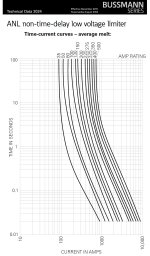Well, if that title doesn't confuse you, nothing will 
My electrical system uses mostly fuses.
The way the fuse block is wired is, the fat wire from the battery contactor goes to the the big post on the fuse block.
BUT, I elected to use a couple of pullable breakers for the flaps & trim.
I'm thinking I just run the appropriate sized wire from the big post on the main bus fuse block to the breakers.
The question is: Do I protect this relatively short wire? AND if so, how?
My electrical system uses mostly fuses.
The way the fuse block is wired is, the fat wire from the battery contactor goes to the the big post on the fuse block.
BUT, I elected to use a couple of pullable breakers for the flaps & trim.
I'm thinking I just run the appropriate sized wire from the big post on the main bus fuse block to the breakers.
The question is: Do I protect this relatively short wire? AND if so, how?





